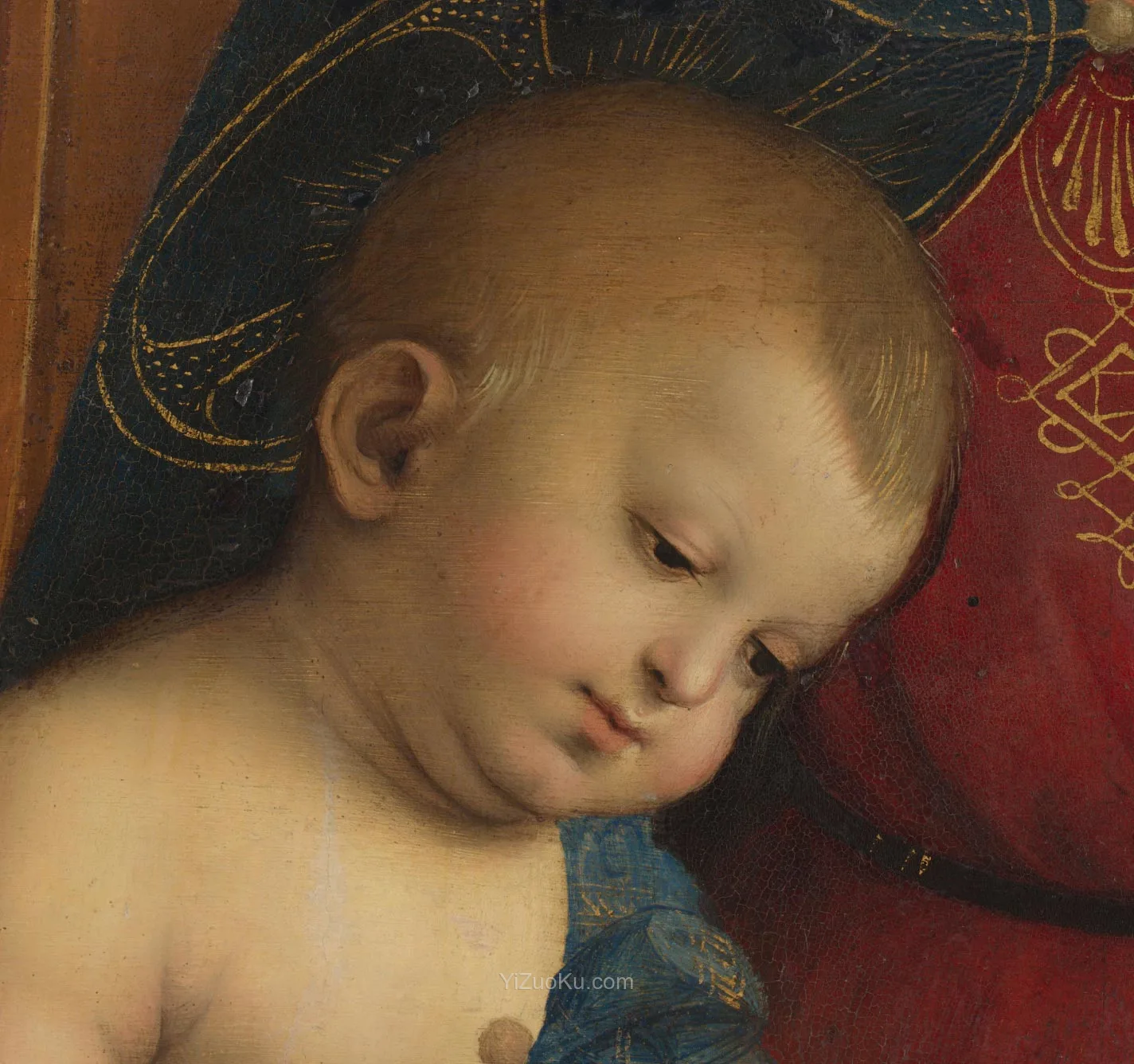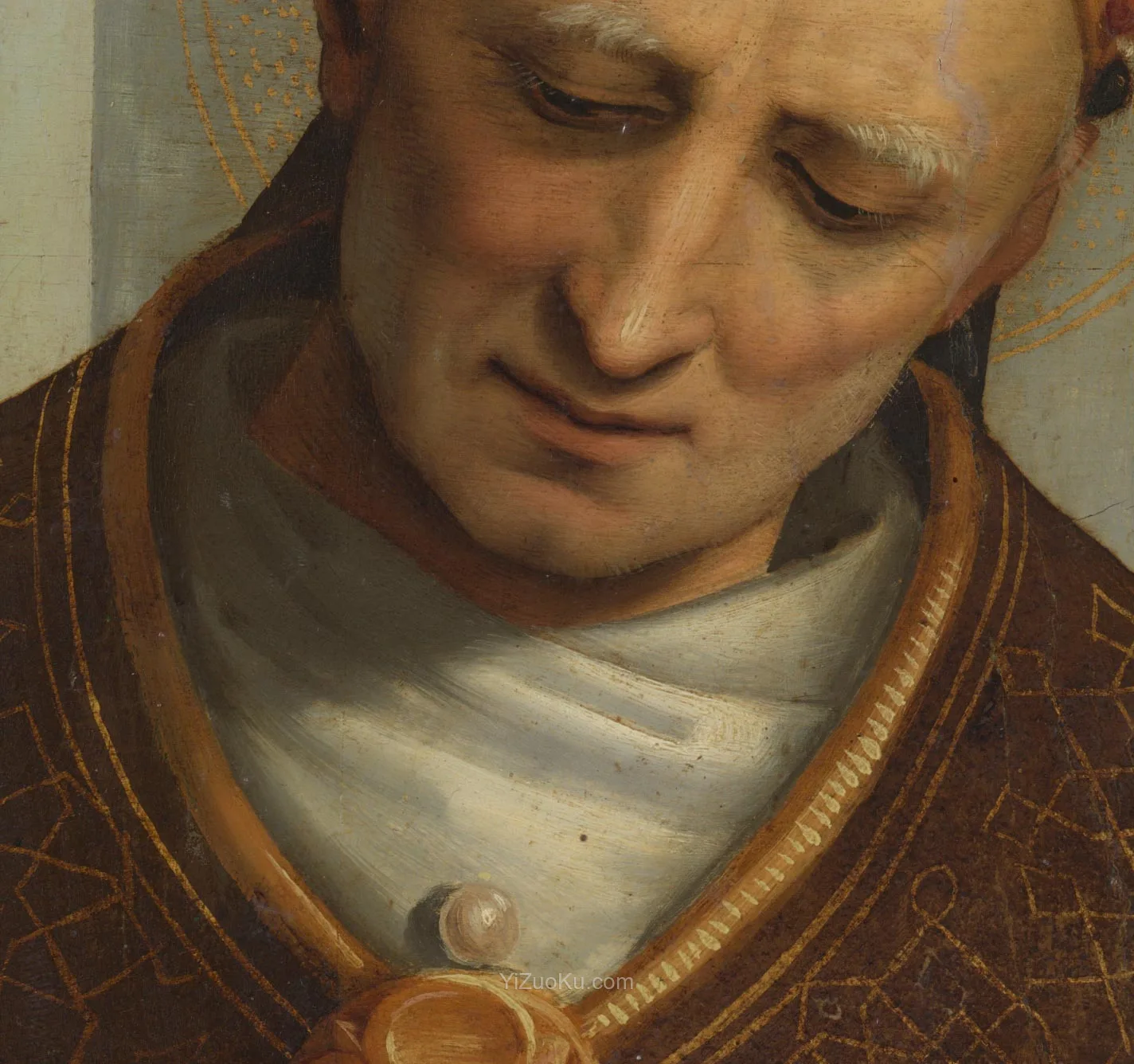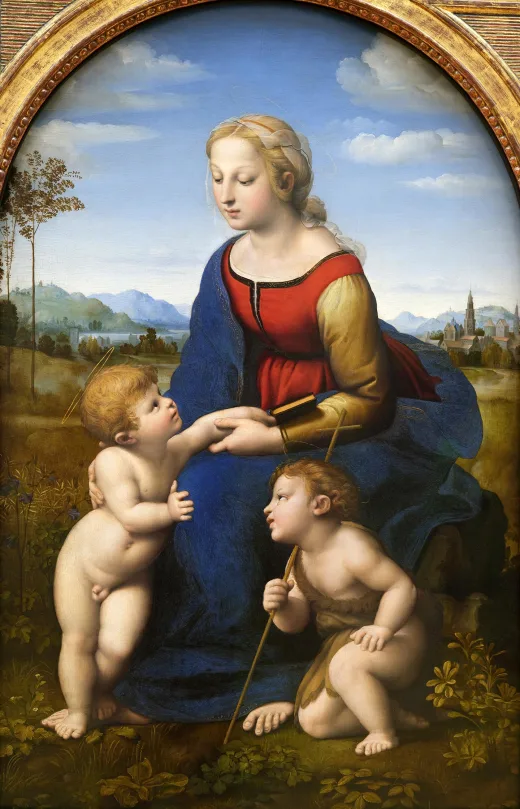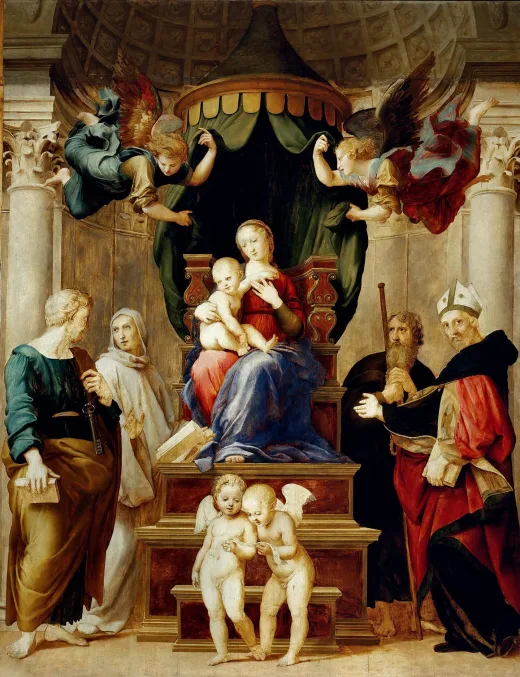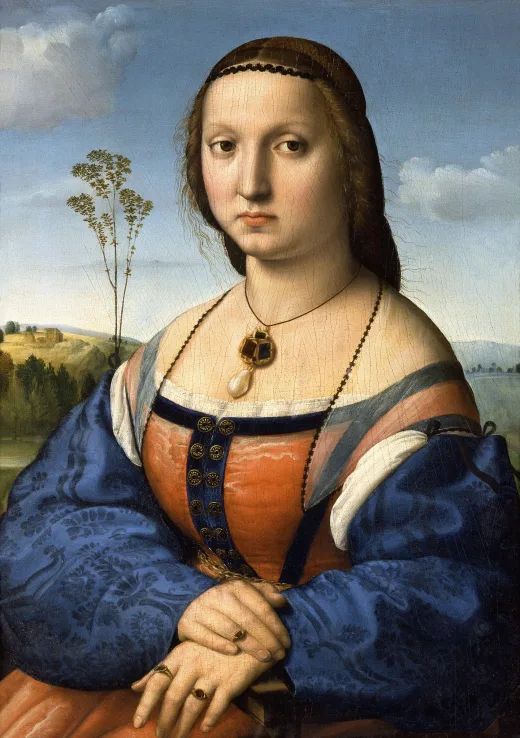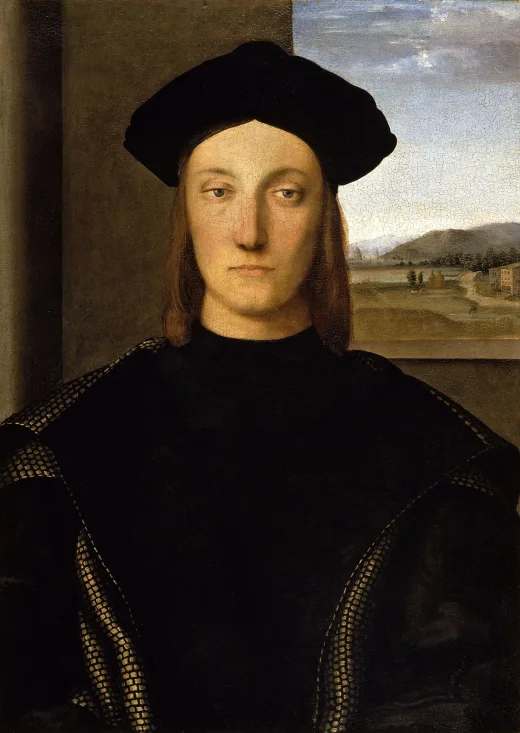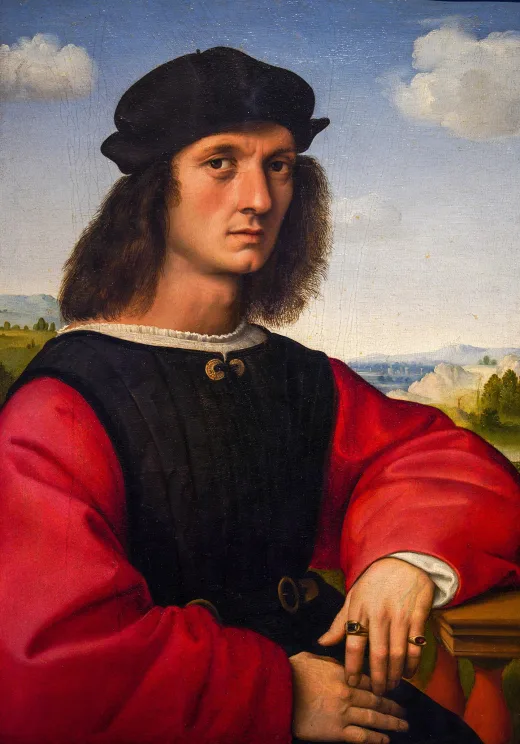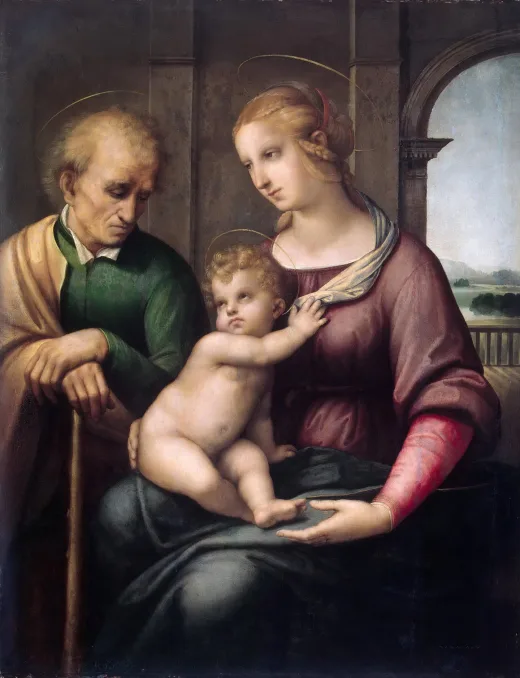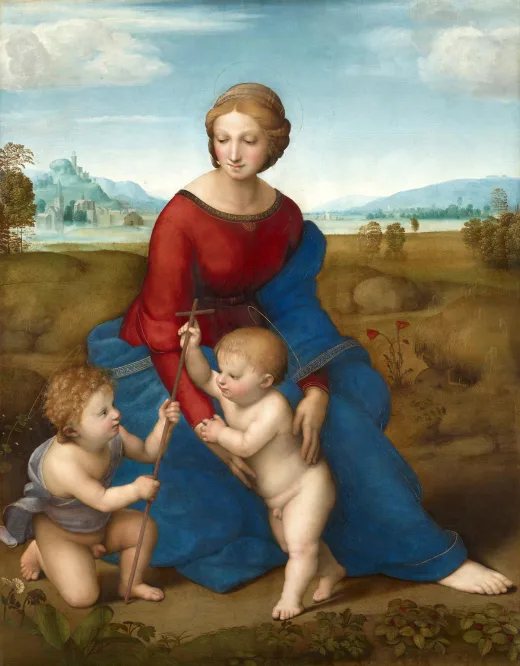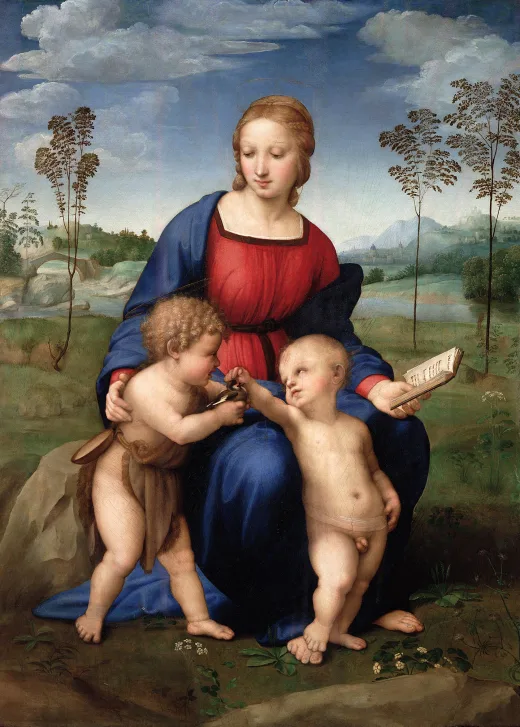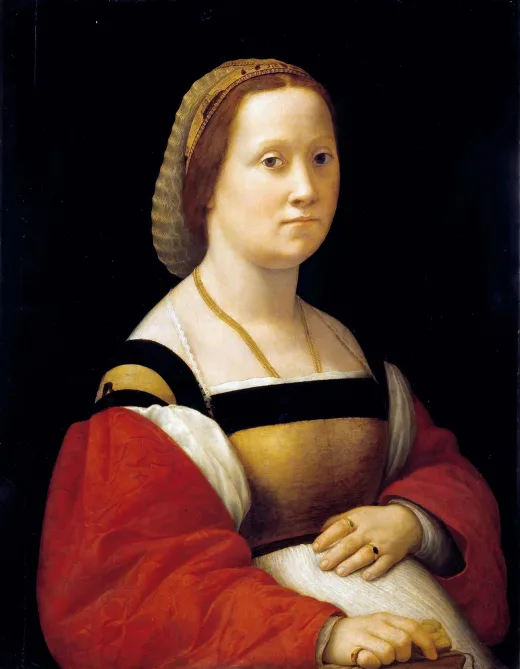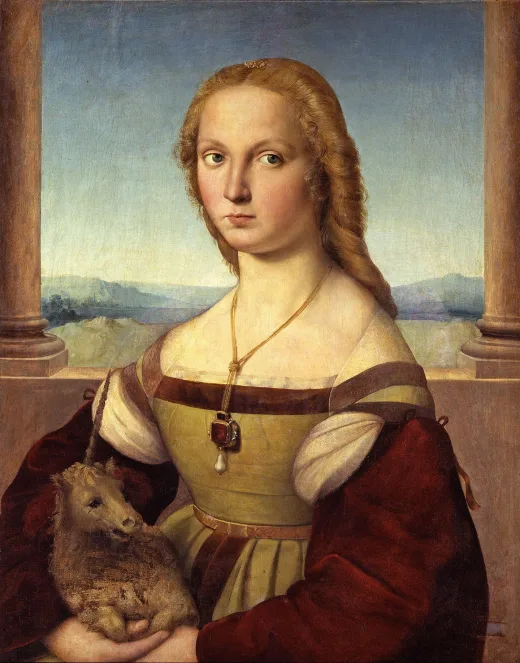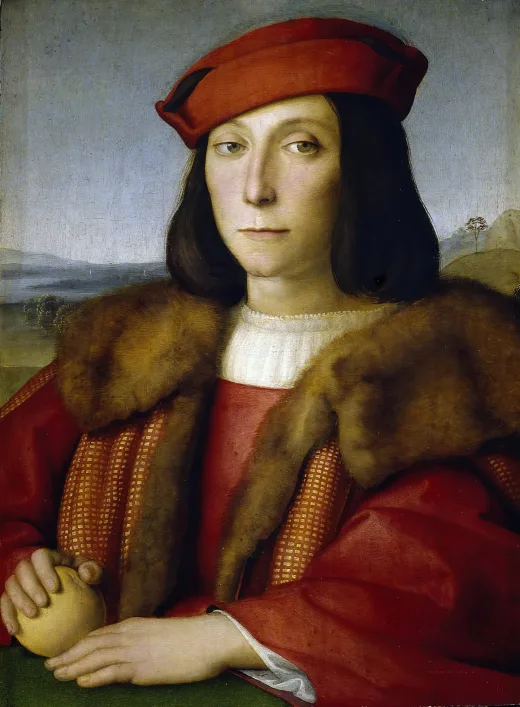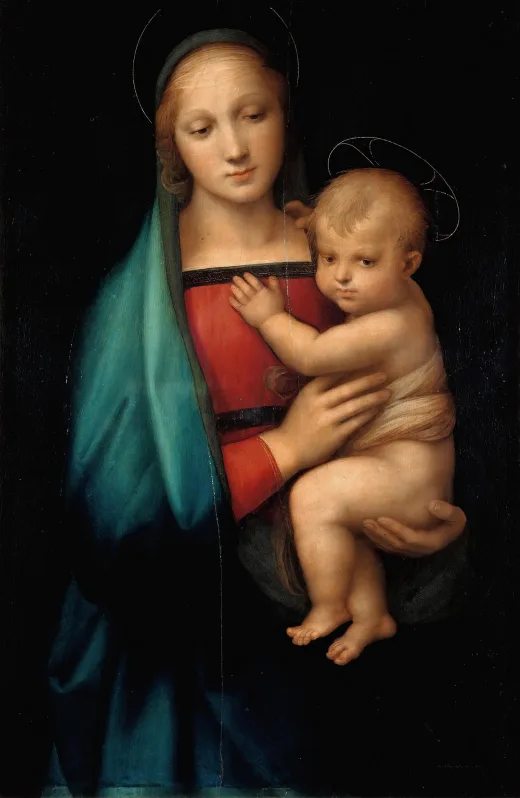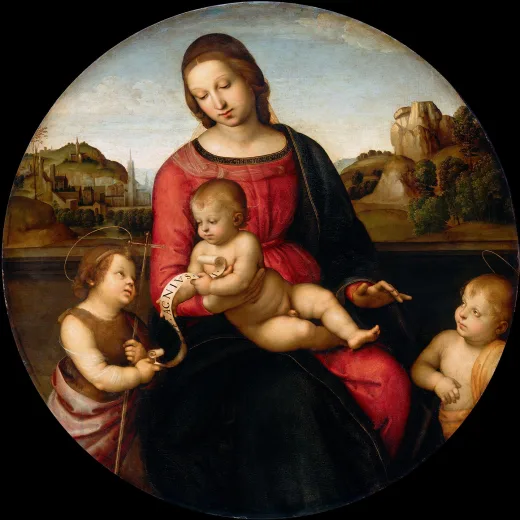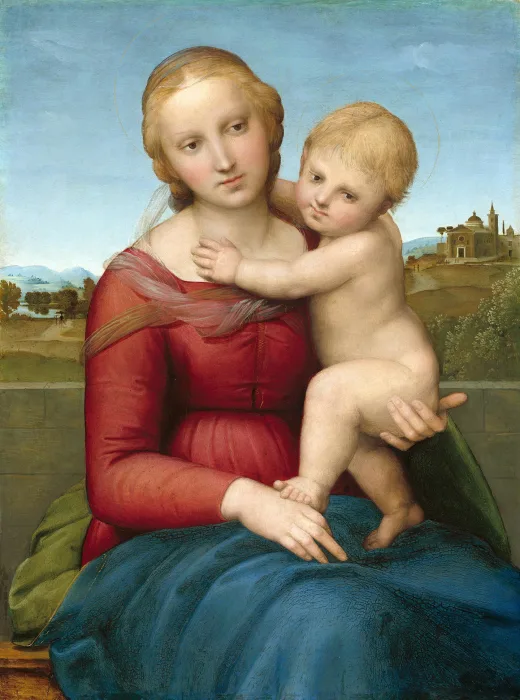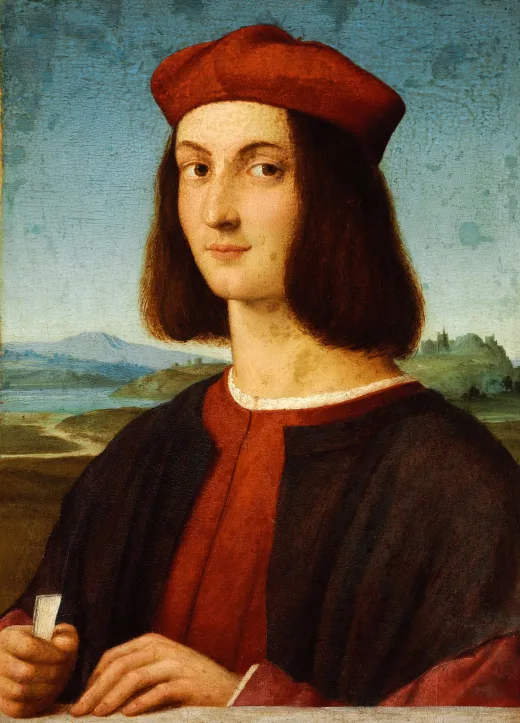拉斐尔祭坛画作品《安西代圣母》超高清大图
原图尺寸:13726×19556像素(300 DPI)超高清图
下载原图消耗12艺点
文件大小:537.86 MB
下载格式: ZIP ( PNG+JPG )
作品名称:安西代圣母
Ansidei Madonna
作品作者:拉斐尔(Raphael)
创作时间:约1505–1507年
作品风格:文艺复兴盛期
原作尺寸:216.8 × 147.6 厘米
作品材质:木板油画(杨木)
收藏位置:伦敦国家美术馆

作品简介
《安西代圣母》(意大利语:Pala Ansidei)是意大利文艺复兴盛期艺术家拉斐尔于1505-1507年佛罗伦萨时期创作的油画。作品描绘了圣母玛利亚端坐在木制宝座上,膝上抱着圣婴基督,右侧站立着施洗约翰,左侧是正在阅读的圣尼古拉斯。
该画作委托创作时,祭坛画还包含其他组成部分。在祭坛台阶画中,仅存《施洗约翰布道》,其余部分已莫名遗失。现主画《安西代圣母》与台阶画《施洗约翰布道》均收藏于伦敦国家美术馆。
这是拉斐尔1505年为佩鲁贾圣菲奥伦佐教堂安西代家族礼拜堂所绘祭坛画的主面板。圣母威严地坐在雕刻木宝座上,膝上摊开的书本正引导圣婴注意特定段落。宝座垂挂的珊瑚珠串末端缀有珠宝十字架,暗喻基督将在十字架上流淌的鲜血。拉丁铭文"SALVE MATER CHRISTI"("万福,基督之母")提示着玫瑰经的诵念。施洗约翰指向圣婴并凝视自己的水晶十字架,预示基督未来的受难。圣尼古拉斯则专注于手中经卷。
拉斐尔精心计算构图几何,在绘画前用刻线网格将画面横纵均分为和谐的三等分。
这是22岁的拉斐尔1505年为佩鲁贾圣菲奥伦佐教堂安西代家族礼拜堂绘制的祭坛画主面板。圣母庄严端坐,圣婴直立其膝。她手指经文引导圣婴注意预示其未来牺牲的段落。宝座垂挂的珊瑚珠串形似念珠,呼应着基督未来的受难血。宝座顶端的拉丁铭文"SALVE MATER CHRISTI"("万福,基督之母")提示着玫瑰经诵念。
施洗约翰指向圣婴并凝视水晶十字架,预知基督未来的死亡。更年长沉思的圣尼古拉斯戴着主教冠持权杖,微微退居宝座后方。他眉间皱纹显示正专注阅读,脚边的三个金球象征他资助贫困贵族女儿免于沦落的嫁妆。这种圣徒环绕宝座圣母圣婴的构图被称为"神圣交谈"(sacra conversazione)。
祭坛画主面板下方的水平台阶画可能原包含两个场景:《施洗约翰布道》和《圣尼古拉斯显灵》。每个叙事场景对应主面板中上方的圣徒。
拉斐尔精确计算构图几何,用刻线网格将画面划分为9×6的方格体系,表明他先在方格纸上设计构图,再转绘至画板。
技术检测显示,宝座后方的浅灰拱顶建筑并非最初设计,而是覆盖原有天空风景所加。拉斐尔利用既有网格定位栏杆(1/3高度)和线脚(2/3高度),使后期添加的建筑与构图浑然一体。此举可能是为弥补安西代礼拜堂的简朴而作。
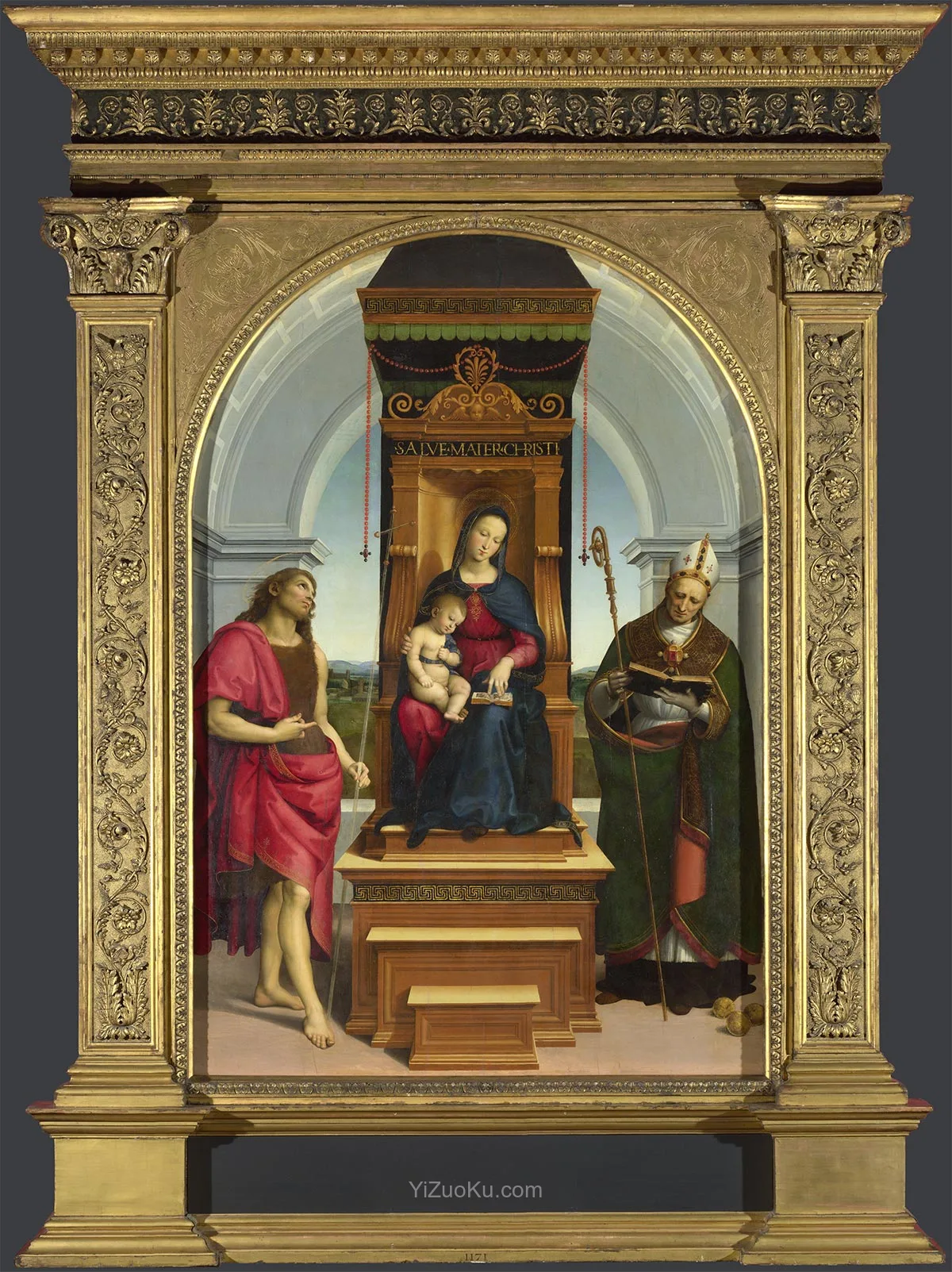
拉斐尔《安西代圣母》带框
The Ansidei Madonna (Italian: Pala Ansidei) is a 1505–1507 painting by the Italian High Renaissance artist Raphael, painted during his Florentine period. It shows the Blessed Virgin Mary sitting on a wooden throne, with the child Christ on her lap. On her right John the Baptist stands, on her left Saint Nicholas is reading.
At the time the painting was commissioned, there were other paintings that made up the grouping for the altarpiece. Of the predellas, the only that remains is Saint John the Baptist Preaching, the others are inexplicably lost.
Both the main painting, "Ansidei Madonna", and the predella "Saint John the Baptist Preaching", are located at the National Gallery in London.
This is the main panel of the altarpiece Raphael painted for the Ansidei family chapel in the Servite Church of S. Fiorenzo in Perugia in 1505.
The Virgin sits in majesty on a carved wooden throne with the Christ Child on her lap. She draws his attention to a passage in the book on her knee. A string of coral beads ending in jewelled crosses like a rosary is suspended from the throne, a reminder of the blood Christ will shed at the Crucifixion. The Latin inscription, ‘SALVE MATER CHRISTI’ (‘Hail Mother of Christ’), would have acted as a prompt to the recitation of the rosary. John the Baptist points to the infant Christ and gazes at his own cross, in foreknowledge of Christ’s future death. Saint Nicholas concentrates on his book.
Raphael carefully calculated the geometry of the composition, using an incised grid to divide it horizontally and vertically into harmonious thirds before he began painting.
This is the main panel of the Ansidei Altarpiece that the 22-year-old Raphael painted for the Ansidei family chapel in the Servite Church of S. Fiorenzo in Perugia in 1505.
The Virgin sits in majesty on a carved wooden throne with the Christ Child upright and alert on her lap. A small book is open on her knee and she follows the text she is reading with her finger. She draws her baby’s attention to a passage in the book, presumably containing allusions to his future sacrifice. A string of coral beads ending in jewelled crosses is suspended from the throne and resembles a rosary, a reminder of the blood Christ will shed at the Crucifixion. The Latin inscription at the top of the throne, ‘SALVE MATER CHRISTI’ (‘Hail Mother of Christ’), would have acted as a prompt to the recitation of the rosary.
John the Baptist points to the infant Christ and gazes at his rock crystal cross, in foreknowledge of Christ’s future death. The older, more contemplative Saint Nicholas, identified by his bishop’s mitre and crosier, withdraws slightly behind the throne. His furrowed brow indicates that he is concentrating on his book. At his feet are three golden balls which represent the purses of gold he gave as dowries to the three daughters of an impoverished nobleman to save them from prostitution. This type of composition, with saints flanking the enthroned Virgin and Child in a unified image, is known as a sacra conversazione (’sacred conversation').
The lower horizontal panel, known as the predella, beneath the main panel of the altarpiece probably depicted two scenes: John the Baptist Preaching and another scene showing a posthumous miracle of Saint Nicholas. Each narrative scene would have been positioned beneath the saint in the main panel to whom it related.
Raphael carefully calculated the geometry of the composition, dividing it horizontally and vertically into harmonious thirds. The picture surface was incised with a grid nine squares wide by six squares high. This suggests that Raphael worked out his scheme in squared composition drawings on paper and then transferred the design to the panel before he began painting.
Technical investigation has revealed that the pale grey architecture and vaulting behind the Virgin’s throne, which provides a sacred space for the figures, was not planned by Raphael from the beginning but was painted over the sky and landscape. Raphael used the pre-existing grid to position the parapet a third of the way up and the mouldings two-thirds of the way up the panel. This explains why this late addition appears so integral to the composition. He may have decided to include the barrel-vaulted architecture in the altarpiece to compensate for the plainness of the Ansidei Chapel.
The Ansidei Madonna is the grandest and most successfully designed of Raphael’s early Madonnas. The painting is closest in style and form to the Colonna Altarpiece (Metropolitan Museum of Art, New York), which gives an idea of how the Ansidei Madonna would have appeared before Raphael added the architectural backdrop.
局部细节

